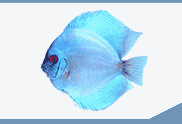

 |
||||||||||||
 |
||||||||||||
| Mysis Shrimp: Natural History and as Fish Food | ||||||
| Al Sabetta | July 26, 2002 | |||||
Native and Introduced History Mysis relicta evolved as a freshwater shrimp from another shrimp, Mysis oculata, through a process where melting glaciers decreased the saline content waters that M. oculata lived in. The shrimp adapted and evolved into the freshwater species known as Mysis relicta. This shrimp is naturally found in some northern lakes of North America where it plays a very important part in the food chain, notably in the Great lakes region where it feeds primarily on phytoplankton and is consumed by many native fish that it evolved with. It has acquired the common name of "opossum shrimp." Because of its role in the Great Lakes food chain, this shrimp was artificially introduced into other northern lakes in the United States and Canada in the hopes that it would serve as a food source for various important salmon species. This was done in the 1940s in a British Columbia lake, Lake Kootenay. The target predator was to be the Sockeye Salmon, Oncorhynchus nerka. These salmon are then fed on by a very large strain of Rainbow Trout, Oncorhynchus mykiss, known as Gerrard Trout. It was hoped this would boost the Gerrard Trout populations, but it didnít. It did, however, boost another population of salmon, Kokanee. This resulted in an excellent sports fishery for the next couple of decades, until the Kokanee population crashed in the 1990s for what is thought to be many reasons, including the Mysis. The success of the Lake Kootenay introduction led to further introductions elsewhere where the Kokanee Salmon existed, in the hopes that it would do the same there. In 1966 the shrimp were introduced to Okanagan Lake in British Columbia where the shrimp populations grew to very high densities and the Kokanee Salmon population crashed. Researchers discovered that though the Mysis shrimp were a great food source for the Kokanee adults, the Mysis shrimp were preying on the fry of the salmon! The densities in this lake grew to such proportions that it now supports a commercial shrimp fishery, Piscine Energetics (http://www.mysis.com), which supplies this shrimp as food for aquarium fish. In other lakes where they have been introduced, like Flathead Lake in Montana, the shrimp have also had a negative impact on the natural ecosystems. In general, introductions of exotic species in any ecosystem usually have a very negative impact on the native flora and fauna. This has been demonstrated time after time. Biology and Reproduction The biology of these shrimp is direct without any naupliar stages, meaning from hatching the young look like the adults, only smaller. Upon hatching they go through several stages of growth called instars, where they shed their chitinous exoskeleton so that growth may occur. Males have four instar stages of development, females have five stages. Sexual maturity is usually one year, but in colder lakes can be up to two years. Mating typically occurs in the winter. The males then die and the females remain alive for several more months, carrying the fertilized eggs in a special brood pouch (the source of its common name, Opossum Shrimp). The eggs hatch in 3 - 4 months and the young emerge fully developed. Mysis as an Aquarium Fish Food As stated earlier, the high populations and nutritious composition of Mysis relicta has created an opportunity for commercial harvesting, packaging, and marketing of this product for public, private, and institutional use as a healthy fish food. There are many benefits associated with Mysis relicta as a food source, foremost among them are a high protein content and an excellent fatty acid profile. more... |
 |
|||||
| About Us :: Message Board :: Chat | |||||
| Library :: Photo Gallery :: Links & Resources :: Breeders & Sponsors :: Merchandise | |||||
| Website designed by: EthanCote.com | © 2001-2004, SimplyDiscus.com. All Rights Reserved. | ||||